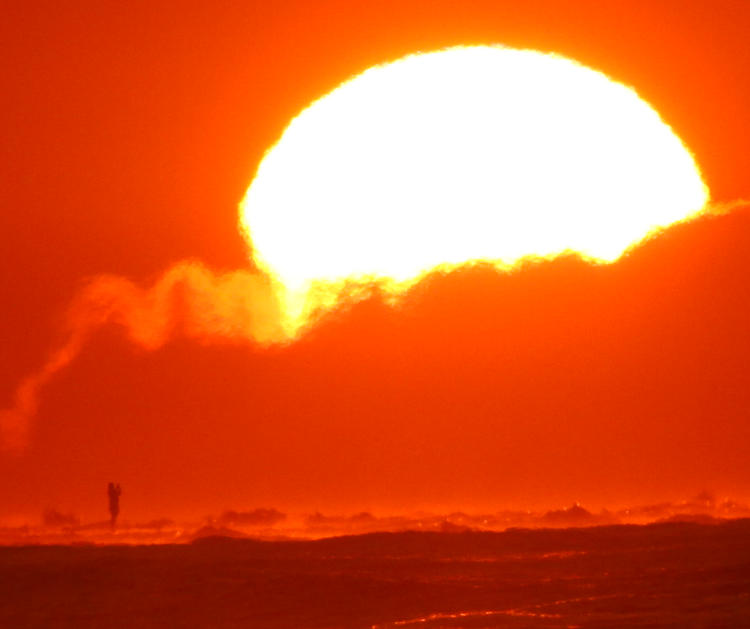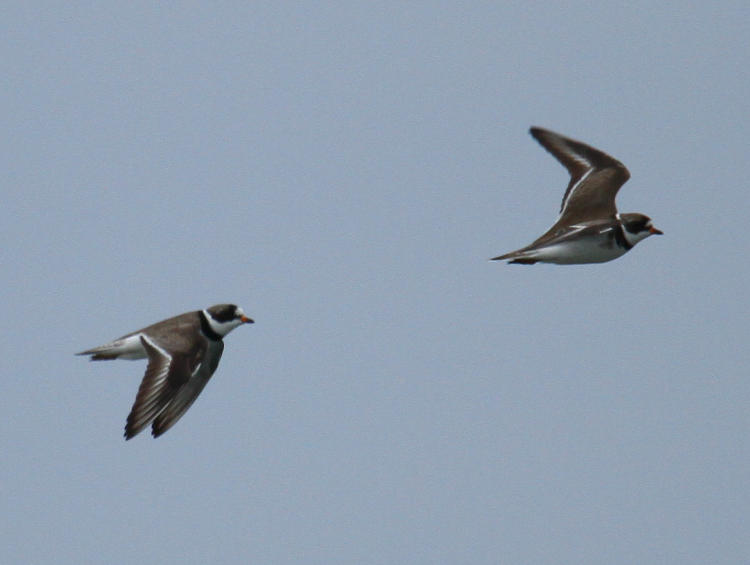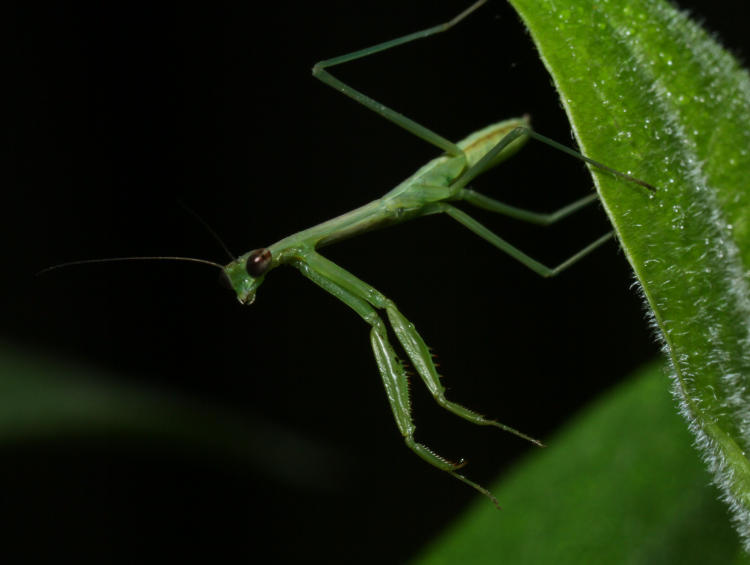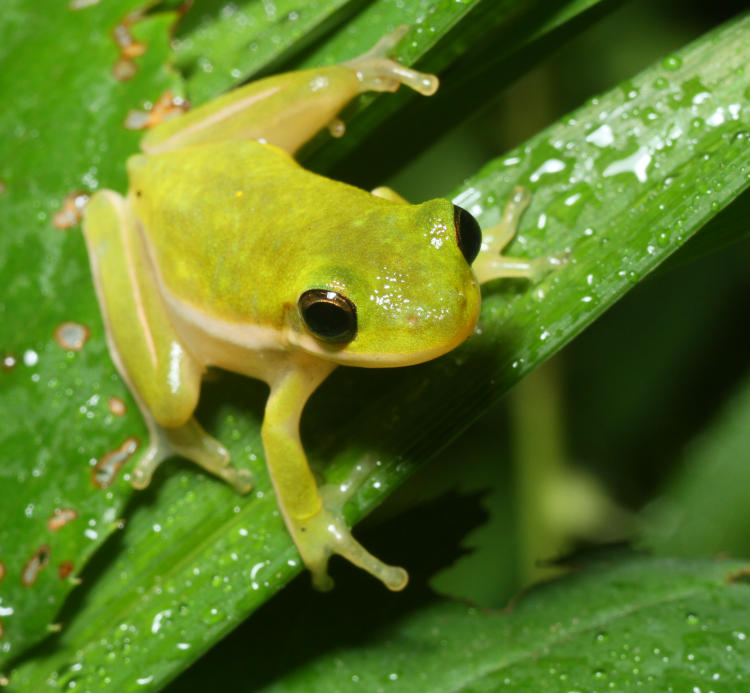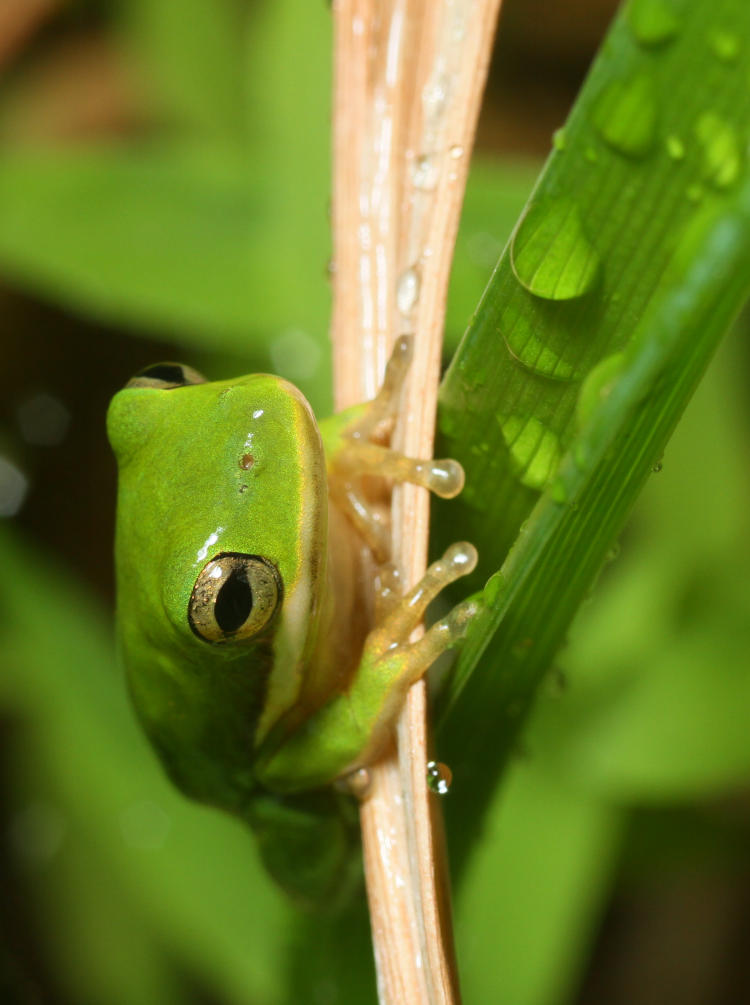At times past, I’ve realized that I’m getting into a rut, posting too many images of a particular topic, mostly mantids and frogs. I have also said that I wasn’t much of a bird photographer, concentrating on other subjects (like mantids and frogs.) Well, at least I can switch ruts, because now we have even more birds. I’ll blame this one, at least, on Buggato, who keeps wanting to go down to Jordan Lake.
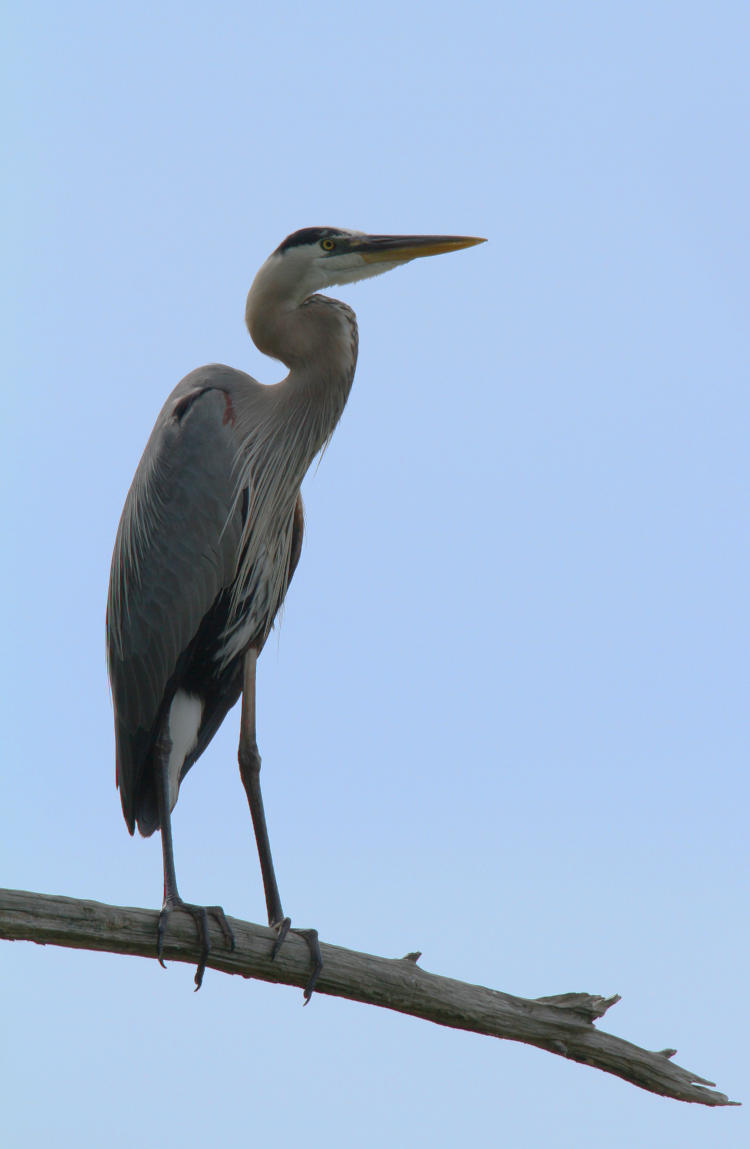
This outing, while seeming a little slow at first, nonetheless netted us a nice little variety of images, even though some of the subjects that we were after never materialized very well. The osprey didn’t want to fish anywhere within a decent photographic distance, and the bald eagles only did one pass. But that was enough to maintain my record for the year of seeing at least one on every visit – they really have been remarkably present lately.

This pair of bald eagles (Haliaeetus leucocephalus) were adults, but still acting like juveniles, chasing one another in what did not appear to be an aggressive manner. I could be wrong – I didn’t do well in my eagle psych classes in school – but generally there’s more of a frantic air when it’s a territorial battle or something. Those open mouths mean nothing – eagles always have open mouths. Bad sinuses, I guess.
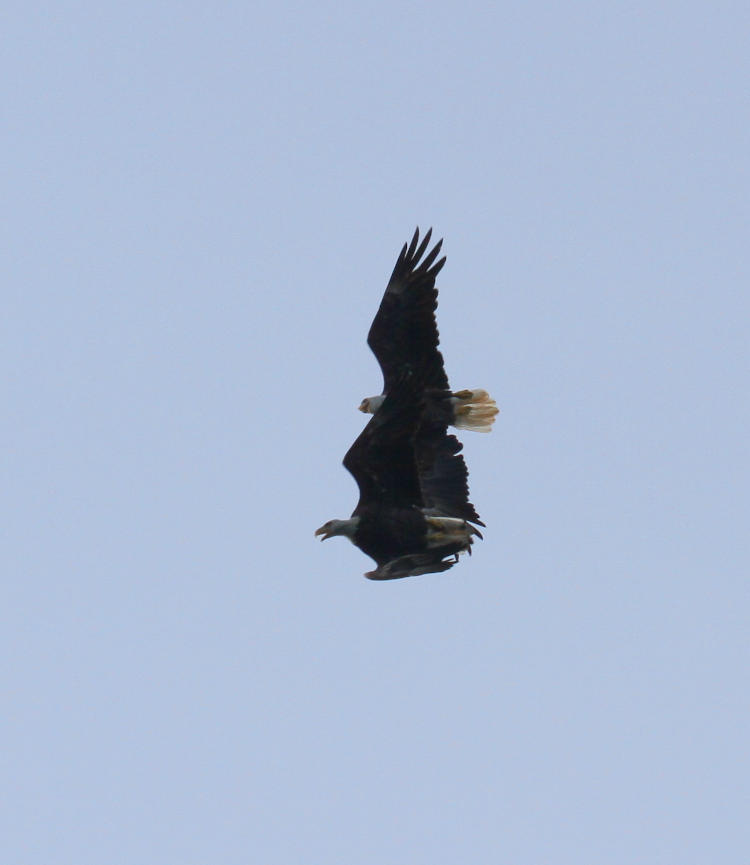
All of this was perfectly silent, without a lot of dodging, and proceeded in pretty much a straight line, so I can only give impressions, but hey, they’re eagle pics, which is what you come to photographers for. Mostly.
The great blue herons (Ardea herodias) were playing scarce, giving us only the nice pose that opened the post and a couple of passes like below, mostly choosing to maintain their distance.
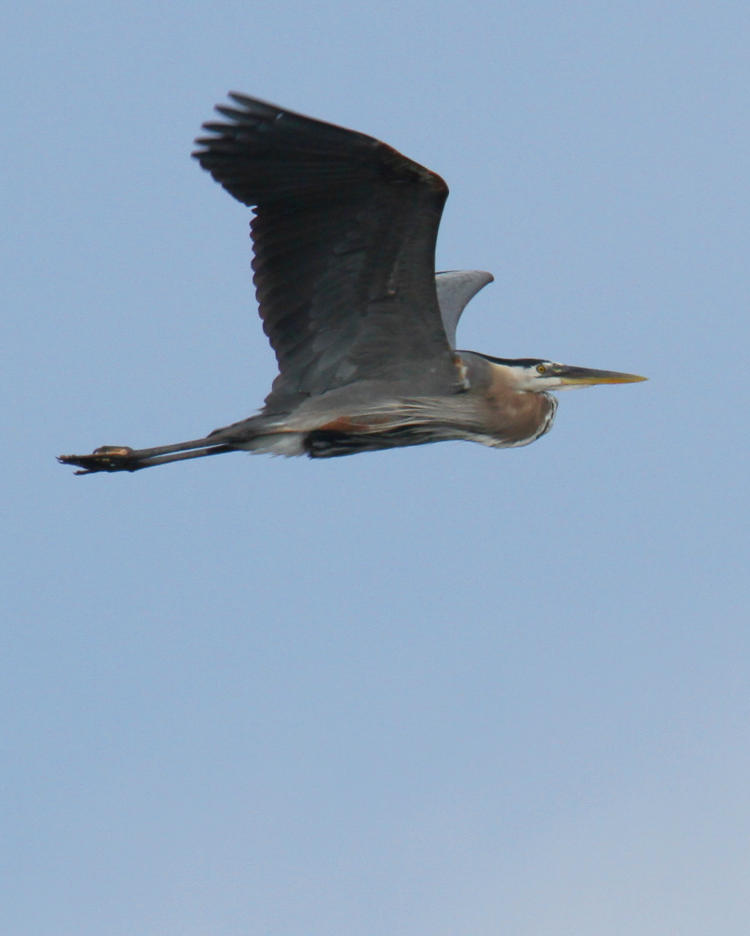
We stalked a few of the osprey (Pandion haliaetus,) watching a pair fishing in the distance, and caught one as it cruised very close overhead, so close that it actually overlapped the frame at 600mm – no fish, no remarkable pose, but some nice detail at least.
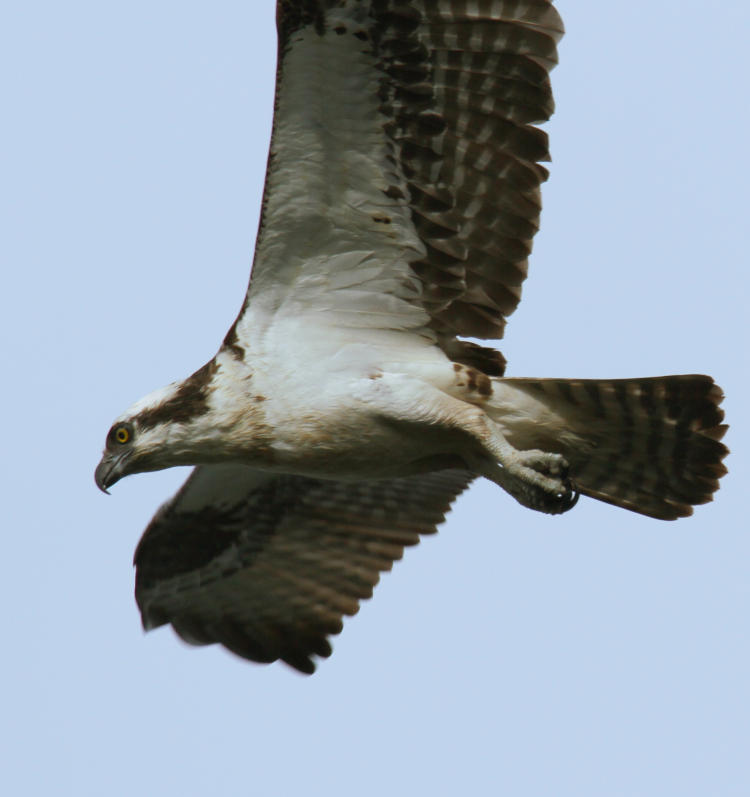
Later on, I glimpsed a bird through the trees and suspected that it landed around the point, not far away, and so started a slow stalk. Eventually, scanning the trees with the long lens, I spotted a bird’s back in the foliage, but the view was semi-obscured, and as I took the camera away from my eye to get my bearings, I could never find it again. Even as we crept up more than close enough to make it out, there was no sign; I can only assume it slipped off as I was peering through the very narrow view field of the long lens trying to find it again. It’s one of those little hazards: a telephoto lens provides absolutely no peripheral vision, so using it to spot subjects can just as often mean the subject does something while outside of the narrow field, something that you might easily have spotted without the lens.
Disappointed after the minor victory of confirming that the bird had landed nearby, and only knowing it was a chocolate-brown back which could have meant either eagle or osprey, we turned to head back – and found an osprey in plain sight on a dead trunk behind us, directly over the path we’d just taken not three minutes before. How long it had been there, I have no idea, and we never saw any sign of one fishing nearby, but the damning evidence was right there.
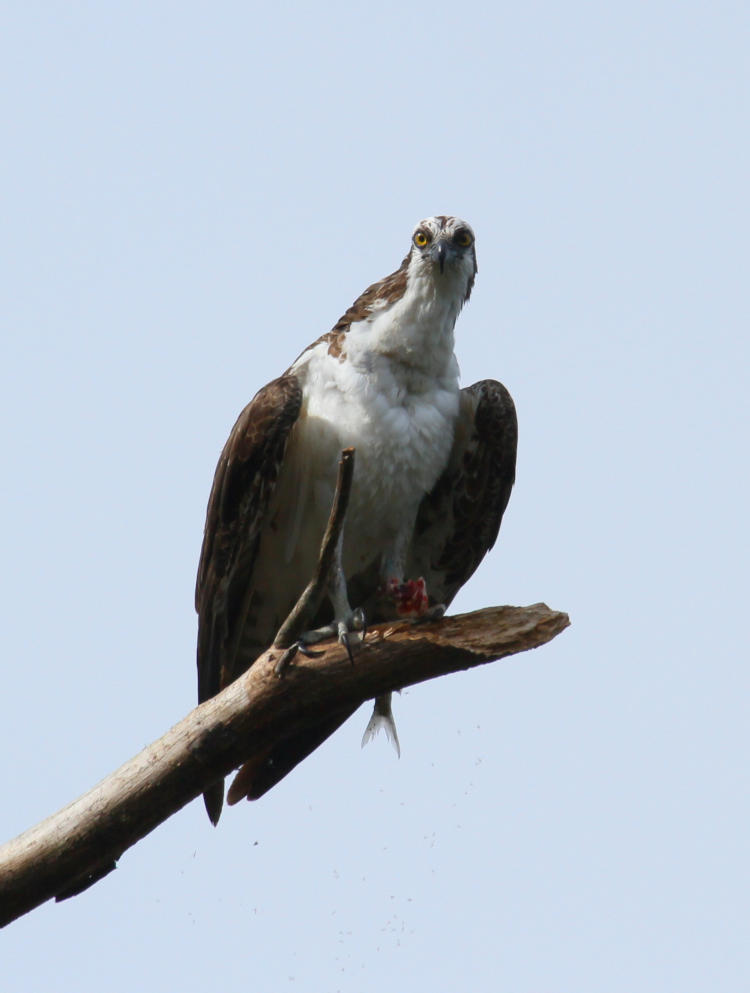
It’s the time of year for feeding young, so either this one wasn’t raising a brood, or it was sneaking a meal while the spouse and young didn’t know – that’s a guilty look if I ever saw one, and we really weren’t far away. Within another thirty seconds, it decided we were too close and left with the remainder of its meal.
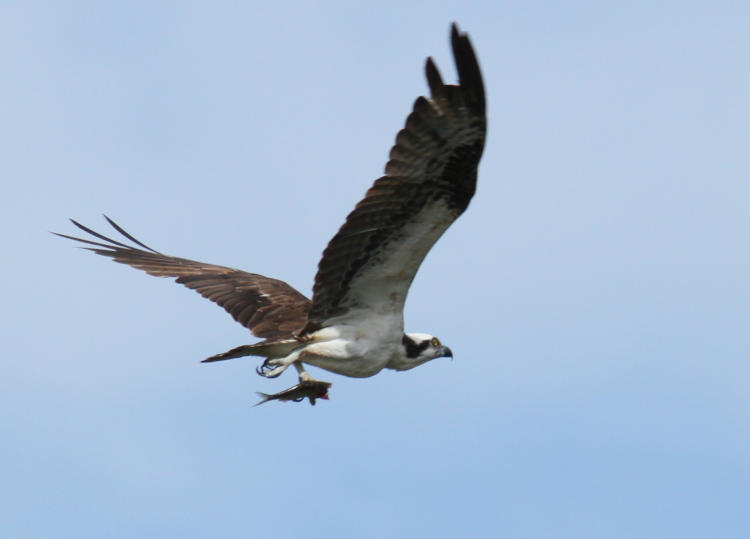
There was something else that I wanted to check on, and as we backtracked towards the car, I spied a species I’d never seen before, and endeavored to get a clear shot of it. This was the best that I got.
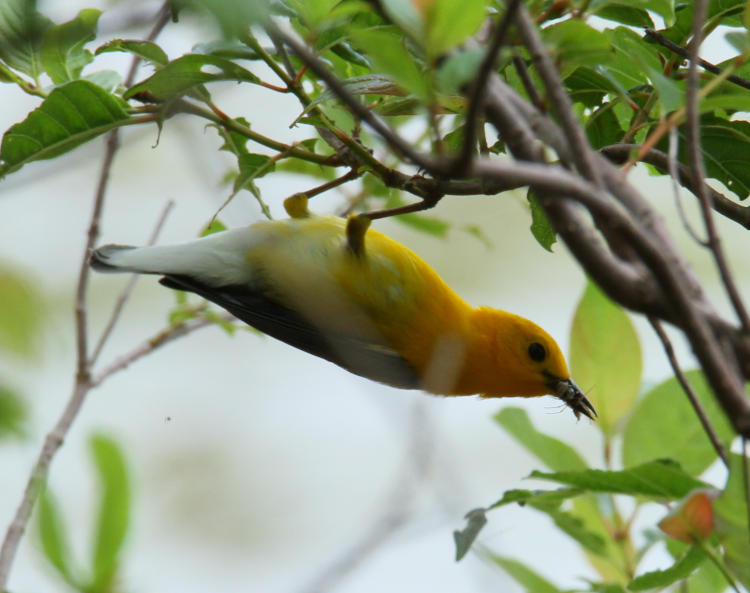
After several minutes of searching through multiple websites (none of which identified this as a North Carolina species) and my Sibley Guide, I pinned this down as a prothonotary warbler (Protonotaria citrea,) likely a male. There were a handful, all flitting around deep within the thicker brush at the lake edge, making the barest appearances out in the open – just long enough to find with the telephoto lens, not long enough to lock focus. Here’s the full frame so you can at least see the conditions.

Again, this is at 600mm, and the most open they ever appeared. But now I can add prothonotary warbler to my list, even though I can’t pronounce it.
What I wanted to check out, though, was the osprey nest we’d seen before, hoping to determine that there were young on the nest. This was several kilometers further south on another arm of the lake, and not the best time because it was still morning and we’d already determined that afternoon provided better light, but the session was for the morning, and better to cope with bad light than no pics at all. So down there we went. This time, the evidence was distinct, even though momma looks surprised.

Seeing the head raised under its own strength, we knew that feeding could now be witnessed reasonably well, so we waited patiently for the spouse to arrive with food – but, not patiently enough. After 45 minutes in the sun without water and no sign of a food delivery, we elected to call it quits, already overdue for our return. But the frames allowed me to confirm something not apparent even in the viewfinder: that there were two baby osprey in the nest. Only one would have its head visible at a time, but the wing or back of another would appear right at the edge of the sticks, in the case below, right in front of mom’s breast.
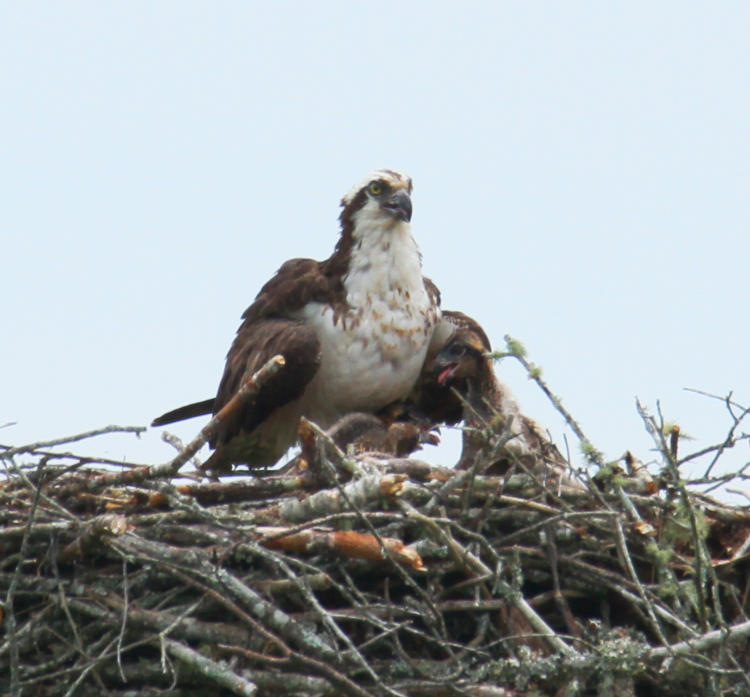
Now, initially, those were all the pics that I’d prepared for this post, and eleven is more than enough. But the weather was predicted to go shitty for all of the next week, and this is prime time in the rearing sequence, so The Girlfriend and I made another trip the following day, this time in the (godawfully sweltering) afternoon, and with a tripod, just in case – we had other things to do in the same general area, anyway, so it wasn’t too much of a side trip. And it paid off.
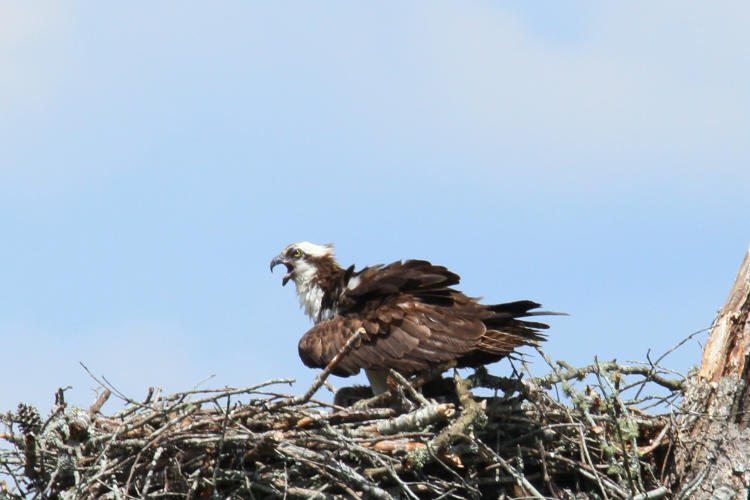
The sun was brutal, with the temperature hitting around 32°C or better, and the near-constant traffic on the bridge was noisy and set up lots of vibration; initially, all we saw was momma trying to cope with the heat and calling frequently. But… let’s let the video explain it.
And we need the still photos to go along with it. I’d switched away from video as dad made his appearance, but in a way I’m glad, because the still photos looks a lot more dynamic.
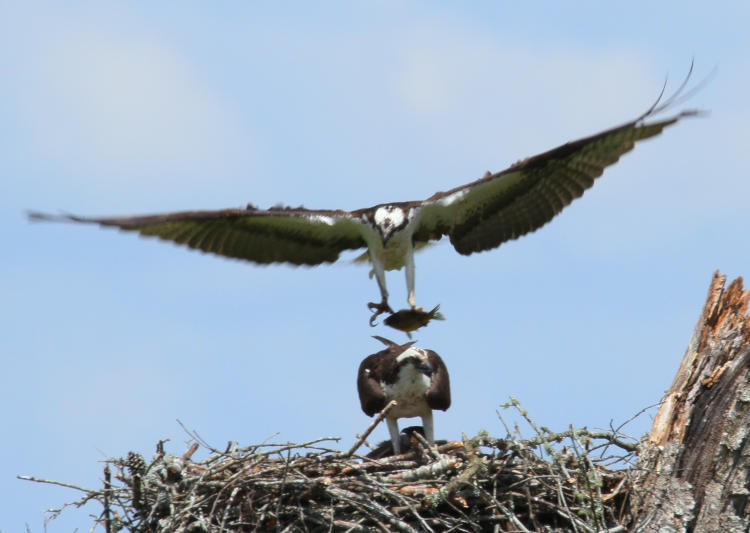
As I said in the video, it was only about ten minutes after we arrived that the male did, so excellent luck this time, and great light.

I had wondered if they would do a ‘changing of the guard,’ with the new arrival taking over rearing duties while the nest-watcher got to take a break, but from appearances (mostly the fluffed feathers,) the new arrival simply handed off the food to be administered by the nest-watcher, so I am considering them in the stereotypical roles, dad doing the hunting and mom doing the rearing, but who knows? There could be a lot of fluidity here, and I don’t want to perpetuate anything. No perpetuater I.
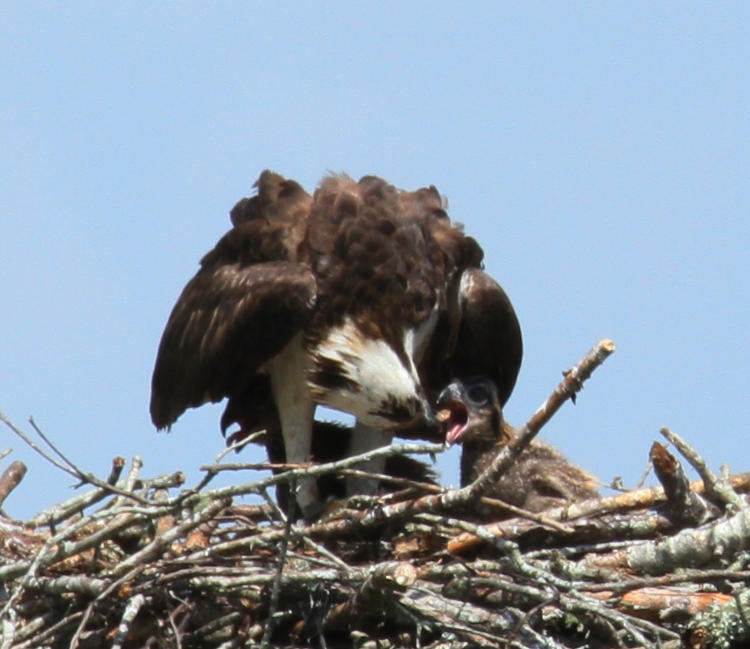
I’m not even sure that these are the parents at all, and not just some daycare center or kindly stranger. I won’t even commit to those being juveniles – we could be looking at “little birds,” or mere actors. It could all be a holograph for all I know. But it’s a damn good pose whichever way. And don’t miss the other appearing in silhouette back there.
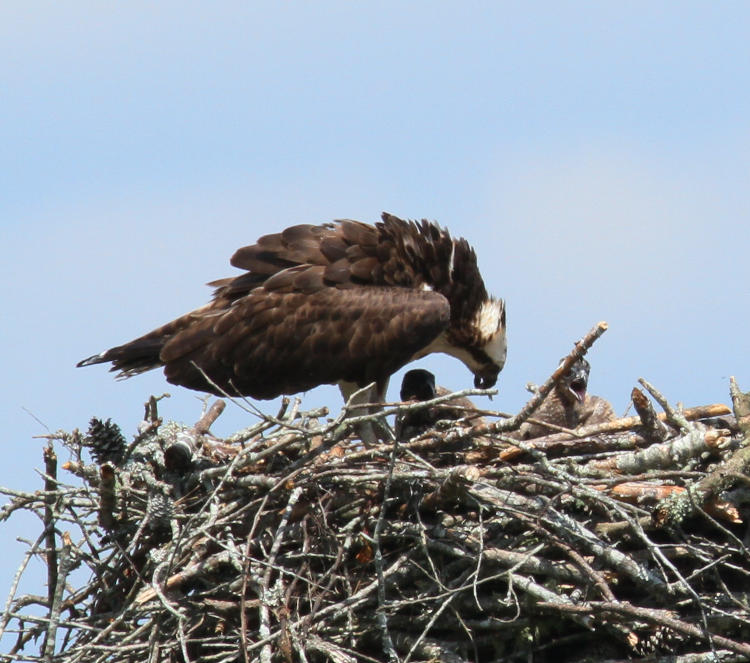
At no point did I capture a portrait of all three of them in the light – one of them, at least, seemed to have the good sense to stay in the shade.
I have no decent estimate for the distance involved, so it’s just guesswork: 40, 50 meters? Not huge, but by naked eye, only the barest smudge of a nestling head could be made out when it framed against the open sky. It was serendipitous that the bridge was there to bring us up almost to eye-level with the nest; any other vantage would have shown little until the young could peer over the edge. Rain is scheduled for the rest of the week (and was supposed to have arrived yesterday,) so this was my one clear chance, and I’m glad it paid off. Someone, however, does not appear to agree with me…
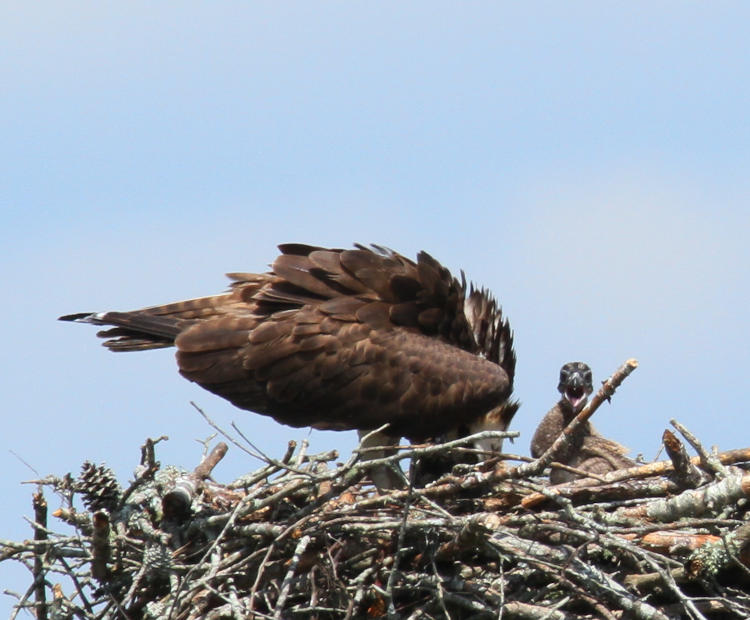






















































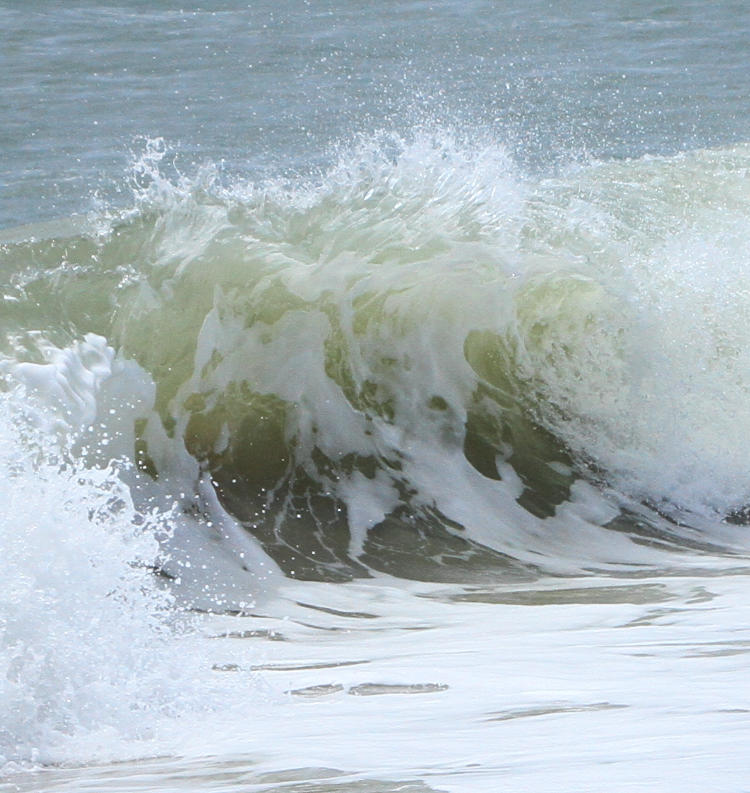
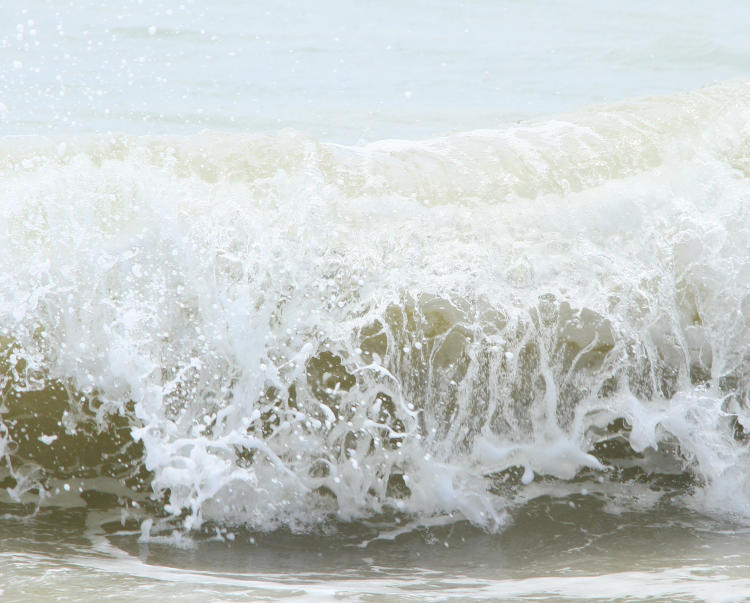
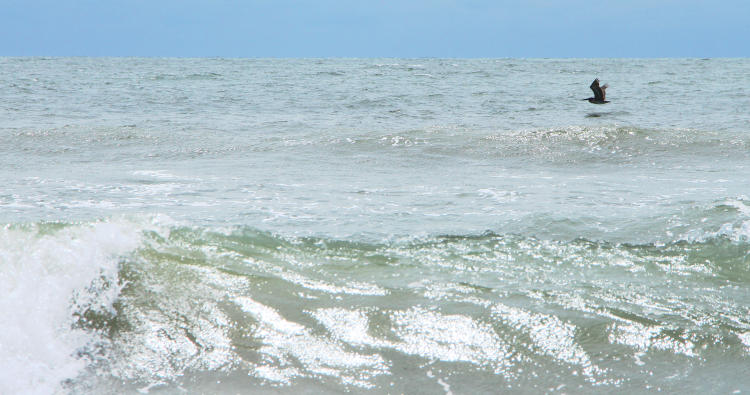

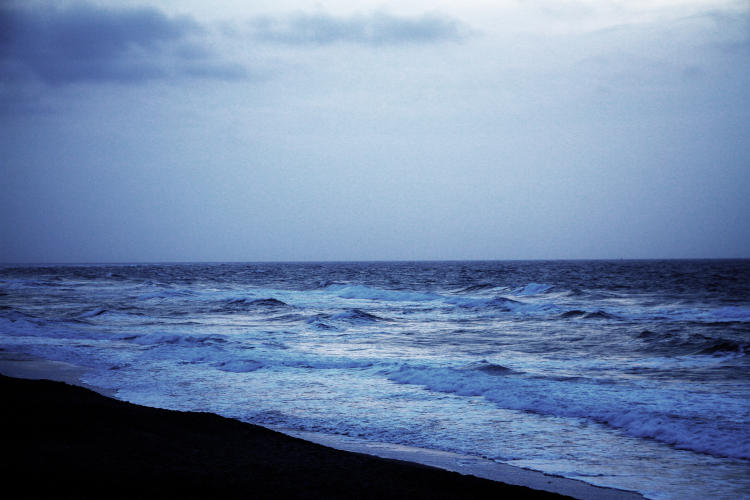

















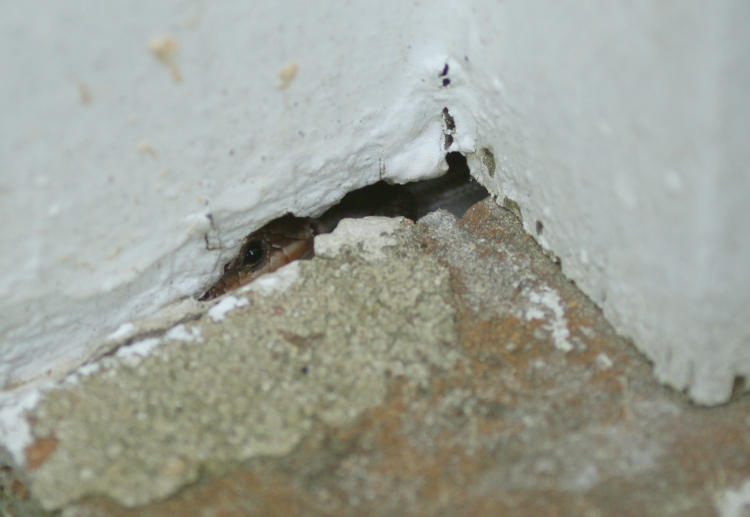
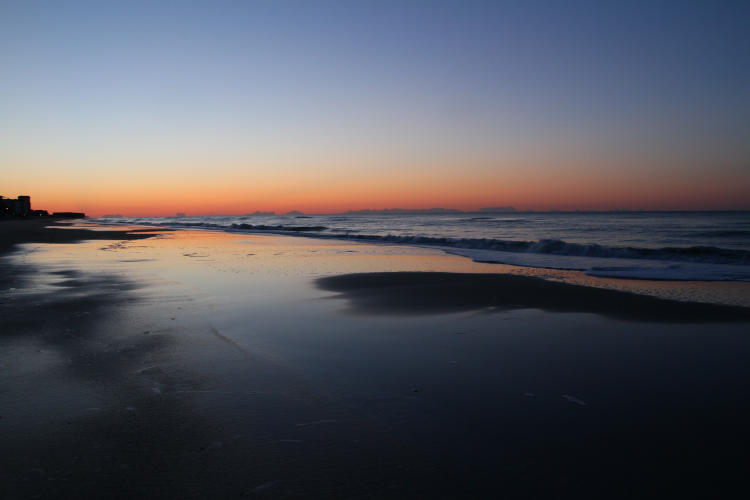

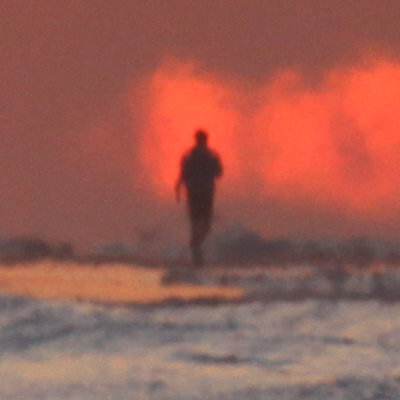 But wait! Let’s take a full-res gander at that one person.
But wait! Let’s take a full-res gander at that one person.